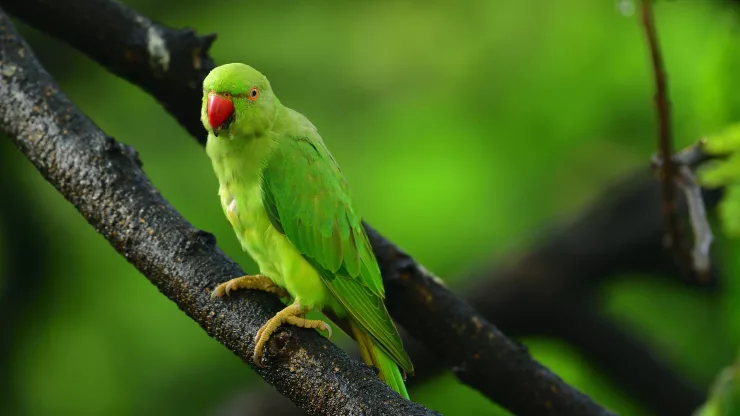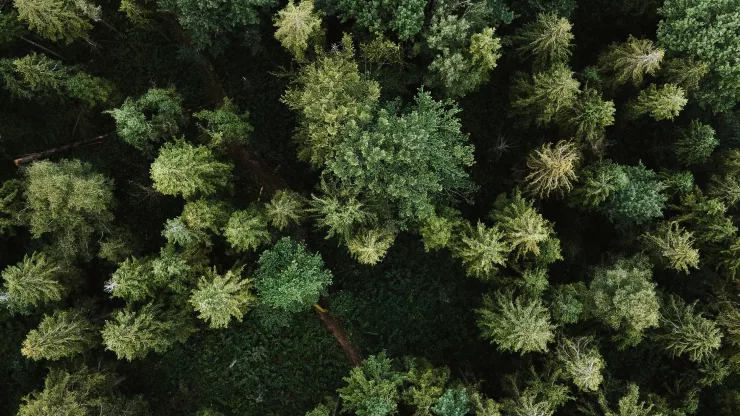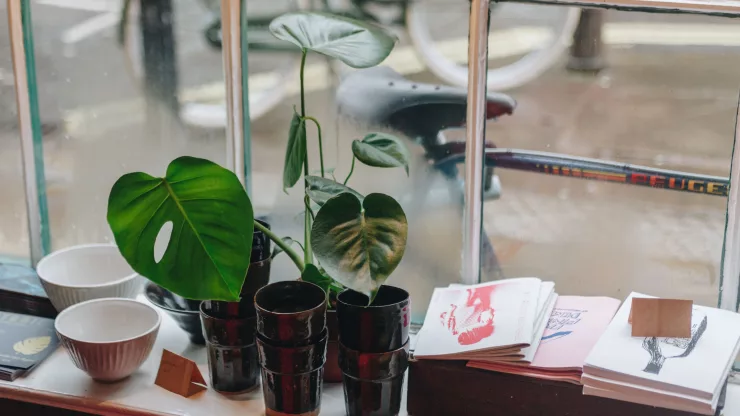Green spaces are at the heart of our cities, providing a breath of fresh air amidst the hustle and bustle of urban life.
These green havens are not just important for the mental and physical well-being of humans, but also for the survival of urban wildlife.
In this article, we will explore the importance of green spaces for urban wildlife and why they are crucial in ensuring the coexistence of humans and animals in urban areas.
Jump to Section
Introduction
Urbanization has led to the transformation of natural habitats into concrete jungles, leaving little room for wildlife to thrive.
However, green spaces such as parks, gardens, and green roofs are much more than just aesthetic features of cities.
They provide valuable habitats, food sources, and shelter for a variety of animal species, from birds and butterflies to foxes and squirrels.
Understanding the Importance of Green Spaces for Urban Wildlife
Green spaces play an essential role in supporting biodiversity and mitigating the negative effects of urbanization on wildlife.
These areas serve as crucial stepping stones that connect fragmented habitats, allowing for the movement and survival of species in urban areas.
They also help to reduce the impact of noise, air, and water pollution on wildlife, making urban environments more habitable for animals.
Urbanization and Wildlife
The Effects of Urbanization on Wildlife
As cities expand, natural habitats are replaced with buildings, roads, and other infrastructure. This transformation has a significant impact on wildlife, leading to habitat loss, fragmentation, and degradation.
Urbanization also increases the risk of wildlife-human conflicts, as animals are forced to adapt to new surroundings and compete for resources with humans.
The Importance of Green Spaces for Urban Wildlife
Green spaces provide a refuge for animals in urban areas, offering them a place to rest, feed, and breed.
These spaces serve as important corridors that connect fragmented habitats, allowing for the movement and survival of species in urban environments.
They also help to improve the quality of life for urban wildlife by providing them with access to food, water, and shelter.
Benefits of Green Spaces for Urban Wildlife
Providing Habitat and Food Sources
Green spaces serve as important habitat and food sources for a variety of animal species, including birds, insects, and mammals.
These areas provide a range of vegetation and microhabitats that support different life stages of animals, from breeding and nesting to foraging and hibernation.
Supporting Biodiversity
Green spaces support a diverse range of animal species, contributing to the overall biodiversity of urban areas.
These areas provide a variety of habitats and food sources that support different species, from pollinators like bees and butterflies to predators like foxes and hawks.
Mitigating the Negative Effects of Urbanization
Green spaces help to mitigate the negative effects of urbanization on wildlife by providing a refuge from urban stressors such as noise, air, and water pollution.
These areas also help to reduce the risk of wildlife-human conflicts by providing animals with alternative resources and habitats.
Improving the Health and Well-being of Urban Wildlife
Green spaces help to improve the health and well-being of urban wildlife by providing access to food, water, and shelter.
These areas also serve as important breeding grounds for animals, contributing to the overall survival and population growth of species in urban areas.
Designing Green Spaces for Urban Wildlife
Considerations for Designing Green Spaces
When designing green spaces for urban wildlife, it is important to consider the needs and requirements of different animal species.
This includes providing a range of microhabitats, vegetation types, and food sources that support different stages of the animal life cycle.
The Importance of Native Plants in Green Spaces
Native plants are essential in supporting the survival of urban wildlife, as they provide a range of food sources and microhabitats that support different species.
These plants are also adapted to local conditions, making them more resilient to urban stressors such as pollution and climate change.
Incorporating Water Sources for Urban Wildlife
Water sources such as ponds, streams, and bird baths are important in providing animals with access to clean drinking water and habitat.
These water sources can also support a range of animal species, from aquatic insects and amphibians to water birds and mammals.
Encouraging Urban Wildlife in Green Spaces
Strategies for Encouraging Urban Wildlife in Green Spaces
To encourage urban wildlife in green spaces, it is important to provide a range of habitat and food sources that support different species.
This includes incorporating a variety of vegetation types, water sources, and microhabitats that support different life stages of animals.
The Benefits of Citizen Science in Monitoring Urban Wildlife
Citizen science is a valuable tool in monitoring urban wildlife, as it allows residents to contribute to scientific research and monitoring efforts.
This can help to increase our understanding of urban wildlife populations, behavior, and habitat requirements, leading to more effective conservation strategies.
Conclusion
The Importance of Green Spaces for Urban Wildlife: A Call to Action.
Green spaces are crucial in ensuring the survival and coexistence of urban wildlife and humans in cities.
These areas provide valuable habitats, food sources, and shelter for a variety of animal species, from birds and butterflies to foxes and squirrels.
As urbanization continues to expand, it is essential that we prioritize the conservation and enhancement of green spaces in our cities.
FAQ
What is the best way to encourage urban wildlife in my garden or balcony?
To encourage urban wildlife in your garden or balcony, you can:
- Incorporate a range of plants that provide food and shelter for different animal species
- Provide water sources such as bird baths or small ponds
- Create areas of different microhabitats, such as rock piles or log piles
- Avoid using pesticides and other chemicals that can harm wildlife
- Participate in citizen science programs to monitor wildlife populations in your area
How can I design a green space that supports a range of animal species?
To design a green space that supports a range of animal species, you can:
- Provide a range of vegetation types that support different life stages of animals
- Incorporate water sources such as ponds or streams
- Create areas of different microhabitats, such as rock piles or log piles
- Use native plants that are adapted to local conditions and support local wildlife
- Avoid using pesticides and other chemicals that can harm wildlife
I’m a nature enthusiast and creator of Metro Wilds and have spent years exploring the great outdoors.
With a passion for environmental conservation and sustainability, I have dedicated my career to writing about the beauty and wonders of nature, as well as the threats facing our planet.
Contact me at [email protected] for assistance.





